Servicio de Moldeo por Inyección Doble
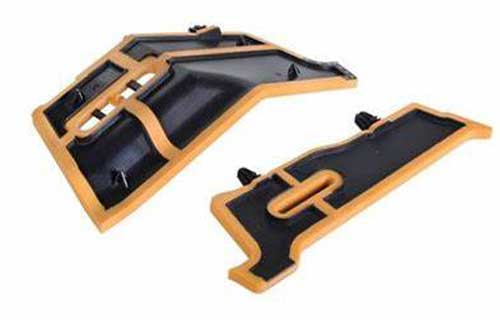
¿Qué es el moldeo por doble inyección?
Double injection molding technology, also known as 2K injection molding or two-stage injection molding, is a process of injecting two different materials into the same mold to make a single part. This process is usually achieved by using two different injection molding machines, or by equipping one machine with two different material barrels. These materials are injected into the mold in sequence, with one material forming the outer layer of the component and the other forming the inner layer. So, have you ever been curious about how this technology precisely controls the layering and bonding of two materials? In fact, this involves precise temperature control, pressure regulation, and clever coordination of mold design. Every injection requires ensuring that the material flows into the mold at the correct time and in the appropriate manner in order to ultimately present the perfect finished product as we see it. So, next time you come into contact with a product made by double injection molding, why not pay more attention to its details and feel the charm of its unique craftsmanship!
¿Cómo funciona el moldeo por doble inyección?
The Double Injection Molding process involves the following steps:
Step 1: The first material is injected into the mold, forming the first layer of the part.
Step 2: The mold is rotated or moved to a different station where the second material is injected into the first layer, forming the second layer of the part.
Step 3: The mold is cooled and the part is ejected.
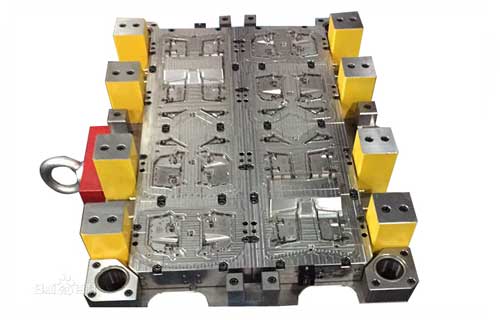
Design, Double Injection Mold making, production and assembly
¿Qué podemos hacer exactamente?
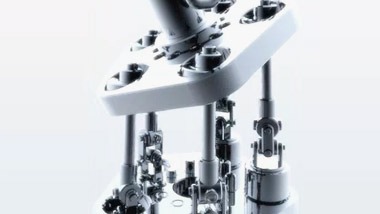
Diseño de moldes
>Proporcionar muestras, dibujos y requisitos, y proporcionar optimización de dibujos y apoyo al diseño y eficiencia.
>Buena optimización de la estructura de moldes de inyección y prestación de servicios de desarrollo de moldes de alta eficacia
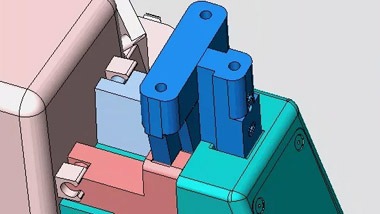
Fabricación de moldes
>De acuerdo con los requisitos de la estructura del producto y el rendimiento del producto, diseñar razonablemente la estructura del molde y cooperar con el software 3D para el análisis del flujo del molde.
>Utilice la impresión de placas láser 3D para que sus muestras cumplan los requisitos de una sola vez
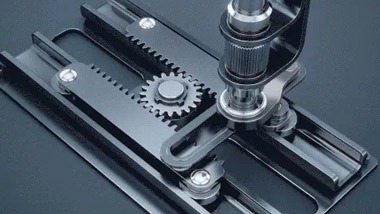
Producción de productos
>Producción de lotes tras la determinación de muestras
>Con un equipo completo de gestión de la producción y equipos, puede realizar entregas puntuales y rápidas de hasta una semana.
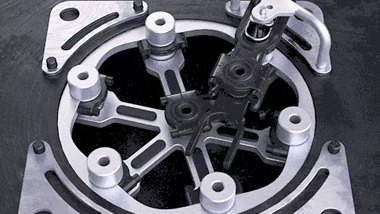
Montaje del producto
>Incoming inspection - material preparation - assembly Online - assembly - finished product inspection - shipment
Applications of Double Injection Molding
Moldeo por inyección doble is used in a wide range of industries, including automotive, electronics, consumer goods, and medical devices. Some examples of applications include:
1. Automotive:
Instrument panels, door handles, and interior trim
2. Electronics:
Cell phone cases, remote controls, and computer keyboards
2. Consumer goods:
Toothbrush handles, razor handles, and kitchen utensils
4. Medical devices:
Syringe plungers, inhalers, and surgical instruments
Advantages of Double Injection Molding
- Improved part design: Double Injection Molding allows for complex part designs that are not possible with traditional molding methods.
- Reduced assembly time and costs: Because two materials are molded together in a single step, there is no need for separate assembly processes, saving time and costs.
- Enhanced part functionality: Two different materials can be used to enhance the functionality of the part, such as adding soft-touch surfaces or improving grip.
- Improved part quality: Double Injection Molding results in parts with better surface finish and reduced sink marks.
Challenges of Double Injection Molding
While Moldeo por inyección doble offers many advantages, it also presents some challenges. These include:
1. Increased complexity:
Double Injection Molding requires specialized equipment and skilled operators, increasing the complexity of the process.
2. Higher costs:
The cost of materials and equipment for Double Injection Molding is higher than for traditional molding techniques.
3. Longer cycle times:
Double Injection Molding typically takes longer than traditional molding methods due to the need to inject two materials sequentially.
Custom Plastic Parts Double Injection Molding
In recent years, manufacturing processes have made significant progress, and many innovative technologies have been developed to improve production efficiency, quality, and cost-effectiveness. One of the technologies is double injection molding, which is becoming increasingly popular in the plastic industry.
Double injection molding is a powerful manufacturing technology that has many advantages over traditional molding methods. It allows for complex part design, reduces assembly time and costs, and improves the functionality and quality of parts. Therefore, double injection molding is becoming increasingly popular in many industries. Although it brings some challenges, with suitable equipment and skilled operators, double injection molding can produce high-quality parts that meet various application needs. If you are interested in this, please feel free to contact me anytime!
FAQ About Double Injection Molding
Double Injection Molding, also known as 2-shot molding or 2K molding, is a specialized plastic molding process that allows the creation of complex molded parts with two different materials or colors in a single molding cycle. It involves injecting two different materials into a single mold cavity to produce a finished product with distinct characteristics and features.
The process typically follows these steps:
1. Mold Preparation: A mold is created with two or more cavities, each designed to shape a specific part of the final product. These cavities are arranged in a way that allows the injection of different materials in subsequent steps.
2. First Shot Injection: The first material (usually a rigid plastic) is injected into the mold cavity to create the initial part. This part is sometimes referred to as the substrate or preform.
3. Mold Rotation: After the first shot injection, the mold is rotated or moved to align the second cavity for the next injection.
4. Second Shot Injection: The second material (often a different type of plastic or elastomer) is then injected into the second cavity, directly on or around the previously formed substrate.
5. Cooling and Solidification: Both materials cool and solidify in the mold, bonding together to form the final 2K molded product.
6. Ejection: Once the part has fully solidified and the cooling process is complete, the mold opens, and the finished 2-shot molded part is ejected.
The advantages of Double Injection Molding include:
1. Enhanced Design Capabilities: It allows the creation of complex and aesthetically appealing products with multiple colors, textures, or material properties.
2. Cost and Time Savings: Compared to assembling two separate parts, Double Injection Molding reduces the need for additional assembly steps, saving time and labor costs.
3. Improved Product Functionality: The combination of different materials in a single part can provide added functionality, such as soft-touch grips, overmolded seals, or ergonomic features.
4. Reduced Waste: By molding multiple components in a single cycle, there is less material waste compared to traditional manufacturing methods.
Double Injection Molding is commonly used in various industries, including automotive, electronics, medical devices, consumer goods, and more, where high-quality, multi-material components are required. It offers an efficient way to produce sophisticated products that meet both functional and aesthetic demands.
Certainly! The process of Double Injection Molding, also known as 2-shot molding or 2K molding, involves several steps to create a finished product with two different materials or colors. Here's a step-by-step explanation of the process:
Step 1: Mold Preparation
- The first step is to design and create a mold with multiple cavities. Each cavity is tailored to shape a specific part of the final product.
- The mold is typically made from metal, such as steel or aluminum, to withstand the high temperatures and pressures involved in the injection molding process.
Step 2: First Shot Injection
- The process begins with the injection of the first material into the mold. This material is often a rigid plastic, and the part formed by this initial injection is called the substrate or preform.
- The mold is closed and clamped securely to prevent any leakage during the injection process.
Step 3: Mold Rotation or Movement
- After the first material injection, the mold is rotated or moved to align the second cavity for the subsequent injection.
- The exact movement of the mold depends on the specific design and machine configuration used.
Step 4: Second Shot Injection
- With the mold now in position, the second material is injected into the second cavity. This material is usually a different type of plastic or elastomer.
- The second shot injection is performed directly on or around the preform created in the first step.
Step 5: Cooling and Solidification
- Both materials injected into the mold now cool and solidify. The cooling time may vary based on the materials used and the complexity of the part.
- The cooling process is carefully controlled to ensure that both materials bond together effectively to form a strong and cohesive final product.
Step 6: Mold Opening and Ejection
- Once the cooling process is complete, the mold is opened, and the finished 2-shot molded part is ejected from the mold cavities.
- Ejection pins or other mechanisms help remove the part without causing any damage.
Step 7: Post-Processing (if necessary)
- Depending on the requirements of the final product, additional post-processing steps such as trimming, assembly, or surface finishing may be performed.
The Double Injection Molding process allows for the creation of complex and high-quality products with two different materials or colors in a single molding cycle. It is commonly used in various industries to manufacture components with unique functionalities and aesthetics. Proper mold design, material selection, and process control are essential to achieving successful outcomes in Double Injection Molding.
In Double Injection Molding, two different materials are used to create a single finished product with distinct properties and characteristics. The choice of materials depends on the specific requirements of the product, the desired functionalities, and the application. Some commonly used materials in Double Injection Molding include:
1. Thermoplastic Elastomers (TPE): TPEs are a popular choice for the second shot in Double Injection Molding. They offer excellent flexibility, elasticity, and soft-touch properties, making them ideal for providing grip, seals, or cushioning features in the final product.
2. Thermoplastic Polyurethane (TPU): TPU is another common elastomeric material used in Double Injection Molding. It provides similar properties to TPE but may have slightly different performance characteristics.
3. Acrylonitrile Butadiene Styrene (ABS): ABS is a rigid thermoplastic commonly used for the first shot in Double Injection Molding. It offers good strength, impact resistance, and dimensional stability.
4. Polypropylene (PP): PP is a versatile thermoplastic used in both the first and second shots of Double Injection Molding. It offers a balance of strength, chemical resistance, and low weight.
5. Polycarbonate (PC): PC is known for its high impact resistance, optical clarity, and excellent dimensional stability. It is used in various applications where transparency or toughness is required.
6. Polyethylene (PE): PE is a popular thermoplastic with various grades available for different purposes. It is often used in Double Injection Molding for its chemical resistance, low friction, and excellent electrical insulating properties.
7. Thermoplastic Polyesters (PET, PBT): These materials offer good mechanical properties and chemical resistance. They are used in applications where durability and heat resistance are essential.
8. Polystyrene (PS): PS is a versatile and economical thermoplastic used in various applications. It is available in different grades, including general-purpose and high-impact versions.
9. Liquid Silicone Rubber (LSR): LSR is used for its excellent heat resistance, flexibility, and biocompatibility. It is often employed in the second shot for medical, automotive, and electronic applications.
10. Polyamide (Nylon): Nylon materials are known for their high strength, abrasion resistance, and low friction. They are used in applications such as gears, bearings, and wear-resistant components.
These are just a few examples of the materials commonly used in Double Injection Molding. Manufacturers can choose from a wide range of thermoplastics, elastomers, and other specialty materials to achieve the desired properties and functionalities in the final product. Proper material selection is crucial to ensure the success of the Double Injection Molding process and the performance of the end product.
Double Injection Molding, with its ability to create complex parts with two different materials or colors in a single molding cycle, finds application in various industries. Some of the industries that commonly utilize Double Injection Molding include:
1. Automotive: In the automotive industry, Double Injection Molding is used to manufacture components such as multi-material interior trim parts, overmolded grips for steering wheels, buttons with different textures, and soft-touch surfaces for control panels.
2. Electronics and Electrical: Double Injection Molding is used to create electronic device housings with multiple materials, combining rigid and flexible elements. It is also employed for producing buttons, keypads, and casings for various electrical appliances.
3. Medical Devices: Medical devices often require components with soft-touch surfaces, ergonomic grips, and overmolded seals. Double Injection Molding enables the production of these complex parts with different materials in a single step, meeting the stringent requirements of the medical industry.
4. Consumer Goods: Various consumer products benefit from Double Injection Molding. This includes items like two-tone mobile phone cases, toothbrush handles with rubberized grips, and kitchen utensils with soft-touch features.
5. Toys and Recreational Products: Toys often incorporate multiple materials for safety, aesthetics, and functionality. Double Injection Molding is employed to create toys with flexible parts, different colors, and textures.
6. Household Appliances: Household appliances may use Double Injection Molding for creating ergonomic handles, buttons, and control panels with various materials to enhance user experience and functionality.
7. Sports and Outdoor Equipment: Double Injection Molding is utilized to manufacture sporting goods like bike grips, tool handles, and water-resistant equipment with different materials for durability and comfort.
8. Aerospace: The aerospace industry uses Double Injection Molding for producing aircraft components with multiple functionalities and materials, such as overmolded gaskets and seals.
9. Industrial Equipment: Industrial machinery and equipment can benefit from Double Injection Molding for creating complex parts with a combination of hard and soft materials for improved functionality and performance.
10. Healthcare and Personal Care: Products in the healthcare and personal care industries, such as medical devices, surgical instruments, and personal care items, often require materials with specific properties. Double Injection Molding allows for the combination of materials to meet these demands.
These are just a few examples of the industries and applications that commonly utilize Double Injection Molding. The versatility and ability to create innovative products with enhanced features make Double Injection Molding a valuable manufacturing process in numerous sectors.
Yes, there are several design considerations that are specific to Double Injection Molding. To ensure a successful and efficient manufacturing process, designers need to take these factors into account when creating parts intended for Double Injection Molding. Some of the key design considerations include:
1. Material Compatibility: Selecting materials that are compatible with each other is essential for proper bonding between the two shots. Materials with similar melt temperatures and adhesion properties are generally preferred.
2. Parting Line and Shutoffs: Proper placement of the parting line and shutoffs is crucial to prevent material leakage between cavities during injection. Designers must ensure that the parting line is well-defined and can be effectively sealed to avoid flash or defects.
3. Wall Thickness: Maintaining uniform wall thickness throughout the part is important for balanced filling during both shots. Uneven wall thickness can lead to warpage, sink marks, or incomplete filling.
4. Undercuts and Draft Angles: Design features like undercuts and draft angles should be minimized or eliminated to facilitate mold opening and ejection. Complex undercuts may require additional mold components or sliding mechanisms, increasing production complexity and cost.
5. Gate Placement: Proper gate placement is critical to achieve even flow and minimize weld lines. Strategic gate locations can improve part aesthetics and mechanical properties.
6. Material Flow and Venting: Designers should consider material flow paths to ensure that the injected materials reach all areas of the mold cavity adequately. Adequate venting is also essential to prevent air traps and achieve uniform filling.
7. Overmolding Considerations: For overmolded parts, ensuring proper bonding between the two materials is crucial. The first-shot substrate should be designed to facilitate good adhesion with the second-shot material.
8. Tolerances and Shrinkage: Different materials have varying shrinkage rates, so designers must account for these differences to achieve the desired final dimensions of the part.
9. Draft and Demolding: Providing draft angles on the part features aids in smooth ejection from the mold. Demolding considerations should also be made to avoid damage to the finished part during ejection.
10. Complexity and Tooling: The complexity of the part and the required tooling can significantly impact production costs and lead times. Designers should strive for a balance between part complexity and manufacturability.
11. Quality Control and Inspection: Double Injection Molding introduces additional variables that may affect part quality. Designers should consider potential quality control challenges and plan for proper inspection methods.
By carefully considering these design considerations, designers can optimize the Double Injection Molding process, enhance part quality, and streamline manufacturing, leading to successful and cost-effective production of complex parts with multiple materials. Collaboration between designers and mold manufacturers is crucial to ensuring that the final design is well-suited for Double Injection Molding.
While Double Injection Molding offers numerous benefits, there are also some limitations and drawbacks to consider. These include:
1. Complex Tooling: The design and fabrication of molds for Double Injection Molding can be more complex and expensive than those used in traditional molding processes. The need for multiple cavities and precise alignment adds to the tooling complexity.
2. Cycle Time: Double Injection Molding generally has longer cycle times compared to single-shot molding. The process involves multiple injection steps and cooling times for each shot, which can slow down production.
3. Material Compatibility: Selecting compatible materials is critical for successful bonding between the two shots. Some material combinations may not adhere well, leading to poor part quality or delamination issues.
4. Part Size and Shape: Double Injection Molding may have limitations when it comes to large or intricate parts. The complexity of the mold and material flow can become challenging for certain designs.
5. Limited Material Selection: Although there is a wide range of materials available for Double Injection Molding, the options may be more limited compared to single-shot molding processes.
6. Cost: Double Injection Molding can be more expensive than traditional molding methods due to the added complexity of tooling and the requirement for specialized machinery.
7. Part Quality: Achieving consistent and uniform bonding between the two shots can be challenging, especially for intricate designs or parts with complex geometries. Variations in material flow and cooling rates may result in aesthetic defects or functional issues.
8. Maintenance: Maintaining and servicing the molds for Double Injection Molding can be more involved and costly due to the complexity of the tooling.
9. Limited Design Flexibility: Some design features that work well in single-shot molding may not be suitable for Double Injection Molding. Certain undercuts, for example, can complicate demolding and may require additional actions.
10. Production Volume: Double Injection Molding is often more suitable for medium to high production volumes. For low-volume production, the tooling cost may outweigh the benefits of the process.
Despite these limitations, Double Injection Molding remains a valuable manufacturing process for producing complex parts with unique features and functionalities. Designers and manufacturers should carefully assess the specific requirements of each project and consider the trade-offs between the advantages and drawbacks of Double Injection Molding before choosing it as the preferred manufacturing method.
The cost of Double Injection Molding can vary significantly depending on various factors, including the complexity of the part, the materials used, the size of the production run, and the design and fabrication of the molds. In general, Double Injection Molding is likely to be more expensive than traditional single-shot molding methods due to the additional complexity involved. However, it can offer cost advantages in certain scenarios.
Some cost-related considerations for Double Injection Molding include:
1. Tooling Cost: The design and fabrication of molds for Double Injection Molding are more complex and require precise alignment of multiple cavities. This complexity can result in higher tooling costs compared to single-shot molds.
2. Material Costs: Double Injection Molding involves the use of multiple materials, which can increase material costs. However, the ability to combine different materials in a single part may offset some expenses, especially if it eliminates the need for secondary assembly processes.
3. Cycle Time: Double Injection Molding typically has longer cycle times compared to single-shot molding due to the additional injection and cooling steps. Longer cycle times may impact production volume and labor costs.
4. Production Volume: Double Injection Molding is often more suitable for medium to high production volumes. For low-volume production, the higher tooling costs may make it less economical compared to traditional molding methods.
5. Part Complexity: The complexity of the part design can also influence the cost of Double Injection Molding. Intricate designs may require more advanced molds and additional processing steps, increasing production costs.
6. Part Quality: While Double Injection Molding can improve part quality and functionality, achieving consistent and uniform bonding between the two shots can be challenging. Ensuring high-quality parts may require additional inspection and quality control measures.
7. Material Savings: In some cases, Double Injection Molding can result in material savings by reducing waste and eliminating the need for secondary assembly processes. This can help offset some of the initial costs associated with the process.
In summary, Double Injection Molding may be more expensive than traditional molding methods upfront due to tooling complexity and material costs. However, it can offer advantages in terms of improved part functionality, reduced assembly requirements, and enhanced aesthetics. The cost-effectiveness of Double Injection Molding depends on the specific project requirements, production volume, and the potential benefits it provides over other molding methods. Manufacturers should carefully assess the overall production costs and benefits to determine whether Double Injection Molding is the best fit for their specific application.
Certainly! Double Injection Molding and overmolding are both specialized plastic molding techniques that involve the use of multiple materials to create complex parts. While they may seem similar, there are distinct differences between the two processes:
Double Injection Molding:
1. Process Description: Double Injection Molding, also known as 2-shot molding or 2K molding, is a process in which two different materials are injected into a single mold cavity in two separate shots. The first shot creates the substrate or preform, and the second shot adds another material on top of or around the preform to form the final part.
2. Material Placement: In Double Injection Molding, the two different materials are strategically placed in specific areas of the mold to achieve the desired part design and functionality. The two materials are usually bonded together during the cooling and solidification process to form a cohesive finished product.
3. Part Complexity: Double Injection Molding is typically used to create more complex parts with multiple materials, colors, or features in a single molding cycle. It allows for intricate designs and enhanced part functionalities.
4. Process Complexity: The process involves precise mold design and alignment to ensure accurate placement of the two materials. As a result, Double Injection Molding tends to be more complex and may require specialized molding machines and tooling.
Overmolding:
1. Process Description: Overmolding, also known as insert molding, is a process in which a single material is molded over or around a pre-existing substrate or insert. The substrate can be made of metal, plastic, or other materials.
2. Material Placement: In overmolding, the substrate is first placed into the mold, and then the primary material (usually a soft elastomer or thermoplastic) is injected over the substrate to create the final part.
3. Part Complexity: Overmolding is typically used for simpler parts with specific requirements such as added grip, cushioning, or sealing. It is commonly used for handles, grips, and protective covers.
4. Process Complexity: Overmolding is generally less complex than Double Injection Molding. The process requires a single shot of molding material and can be performed on standard injection molding machines.
In summary, the main difference between Double Injection Molding and overmolding lies in the number of materials and shots used in the process, as well as the complexity of the final part design. Double Injection Molding involves two different materials injected in two separate shots to create complex parts with multiple functionalities. On the other hand, overmolding involves a single material molded over an existing substrate to provide specific features or enhancements to the part. Both processes have their unique advantages and applications, and the choice between them depends on the specific requirements of the part and the desired end-product characteristics.
Double Injection Molding is a versatile process used to manufacture various products with unique features and functionalities. Some examples of products commonly manufactured using Double Injection Molding include:
1. Two-Tone Automotive Interior Trim: Double Injection Molding is used to create automotive interior components with two different colors or textures. For example, a car dashboard with a soft-touch grip area and a rigid main body can be produced using this process.
2. Multi-Material Electronic Device Housings: Electronic devices often require a combination of rigid and flexible materials for durability and user comfort. Double Injection Molding allows for the integration of different materials in a single housing, such as a smartphone case with a rubberized grip.
3. Overmolded Medical Device Handles: Medical devices often use overmolded handles to provide a secure grip for healthcare professionals. Double Injection Molding allows for the combination of materials to achieve the desired ergonomic and tactile properties.
4. Soft-Touch Buttons and Keypads: Consumer electronics and household appliances can benefit from Double Injection Molding to create buttons and keypads with soft-touch surfaces for enhanced user experience.
5. Dual-Color Toys: Double Injection Molding is commonly used in the toy industry to produce toys with two or more colors, allowing for visually appealing and engaging designs.
6. Multi-Component Personal Care Products: Products like toothbrushes or shavers can utilize Double Injection Molding to combine different materials for improved grip and comfort during use.
7. Automotive Overmolded Seals and Gaskets: Double Injection Molding is used to produce automotive seals and gaskets that require a combination of materials with different properties, such as flexibility and sealing capabilities.
8. Soft-Touch Handles for Tools: Hand tools and power tools often incorporate soft-touch handles to reduce user fatigue and improve grip. Double Injection Molding enables the integration of different materials to achieve these properties.
9. Electronic Device Buttons with Embedded Icons: Double Injection Molding allows for the creation of buttons with embedded symbols or icons, enhancing the user interface of devices like remote controls or gaming controllers.
10. Multi-Material Sporting Goods: Sporting equipment like bicycle grips, racquet handles, or golf club grips can benefit from Double Injection Molding to achieve a combination of materials for comfort and performance.
These examples demonstrate the diverse applications of Double Injection Molding across various industries, where the process is used to create high-quality products with enhanced aesthetics, improved functionality, and ergonomic designs.
The quality of Double Injection Molded parts can be comparable to or even superior to other molding processes, depending on the specific requirements of the product and the materials used. The advantages of Double Injection Molding contribute to the overall quality of the parts in various ways:
1. Enhanced Functionality: Double Injection Molding allows for the combination of different materials with distinct properties in a single part. This capability can result in enhanced functionality, such as providing soft-touch grips, sealing features, or multi-color aesthetics.
2. Improved Aesthetics: The ability to mold parts with multiple colors or textures in a single shot enhances the visual appeal of the products. This can be particularly beneficial for consumer goods, automotive interiors, and electronic devices.
3. Bonding Strength: Double Injection Molding facilitates strong bonding between the two materials during the cooling and solidification process. When properly executed, this results in a seamless integration of materials, creating durable and reliable parts.
4. Reduced Assembly: Since Double Injection Molding allows for the creation of complex parts in a single cycle, it eliminates the need for additional assembly steps that could introduce defects or misalignments.
5. Precision and Consistency: Double Injection Molding is a highly controlled process, ensuring precise material placement and uniform filling. This consistency leads to higher product quality and reduced variability in the final parts.
6. Reduced Waste: By combining multiple materials in a single shot, Double Injection Molding reduces material waste compared to producing the same parts through separate molding and assembly steps.
7. Design Flexibility: The design capabilities of Double Injection Molding enable the production of intricate parts with features that would be challenging to achieve using other molding techniques.
However, it's important to note that the quality of Double Injection Molded parts heavily relies on proper mold design, material selection, process optimization, and skilled manufacturing. If not executed correctly, challenges such as material compatibility issues, uneven material distribution, or inadequate bonding between materials may lead to defects or decreased part quality.
In comparison to other molding processes, such as single-shot injection molding or overmolding, Double Injection Molding can offer unique advantages in terms of part design, aesthetics, and functionality. However, the selection of the most suitable molding process should be based on the specific requirements and objectives of the project. Manufacturers should carefully assess the trade-offs and consider factors like part complexity, production volume, material properties, and cost-effectiveness to determine the optimal molding method for their products.
Yes, there are several specific types and variations of Double Injection Molding techniques, each with its unique approach to achieving multi-material components. These techniques allow manufacturers to tailor the process to specific product requirements and manufacturing considerations. Some common types and variations of Double Injection Molding include:
1. Sequential Injection: This is the most common type of Double Injection Molding, where two different materials are injected sequentially into the same mold cavity. The first material forms the substrate, and the second material is injected over or around the preform to complete the part.
2. Co-Injection: Co-injection, also known as sandwich molding or multi-material injection, involves simultaneously injecting two or more different materials into the mold cavity. This technique allows for the mixing of materials in specific areas of the part, creating unique material blends and gradients.
3. Rotational or Indexing Molding: In this variation, the mold is rotated or indexed between the first and second injection shots to position the cavities correctly for each material. Rotational molding allows for more complex part designs and overmolding on multiple sides of a preform.
4. Core-Back Molding: Core-back molding, also called cavity rotation molding, involves partially filling the mold cavity with the first material, then retracting a core or a portion of the cavity to create space for the second material. The core is moved back, and the second material is injected to complete the part.
5. Transfer Molding: Transfer molding combines the principles of injection molding and compression molding. The first material is preformed into a specific shape and placed in the mold cavity. The second material is then injected under pressure, bonding with the preform to create the final part.
6. Gas-Assisted Double Injection Molding: This technique uses a gas (usually nitrogen) to help push the second material into specific areas of the mold. The gas assists in achieving a complete fill, reducing material usage and improving part quality.
7. Water-Assisted Double Injection Molding: Water-assisted molding involves injecting water or a water-based fluid to displace the first material during the second injection step. The water creates channels in the substrate, allowing the second material to flow and bond effectively.
8. Foam Injection Molding: In foam injection molding, one of the materials used is a foaming agent, resulting in a part with a cellular structure. This process is commonly used to create lightweight and cushioning components.
Each variation of Double Injection Molding offers its advantages and is suitable for specific applications. Manufacturers should carefully evaluate their product requirements, design complexity, material properties, and production volume to determine the most appropriate Double Injection Molding technique for their specific needs.
Using Double Injection Molding offers several advantages over traditional molding techniques. These advantages make it an attractive manufacturing process for producing complex parts with multiple materials or colors. Some of the key benefits of Double Injection Molding include:
1. Reduced Assembly: Double Injection Molding allows for the creation of complex parts with multiple materials in a single molding cycle. This eliminates the need for secondary assembly processes, saving time and reducing labor costs.
2. Enhanced Functionality: By combining two or more materials with different properties, Double Injection Molding can provide enhanced functionality in the final product. For example, soft-touch grips, seals, or overmolded features can be integrated directly into the part during the molding process.
3. Improved Aesthetics: The ability to mold parts with different colors or textures in a single shot enhances the visual appeal of the products. This is especially beneficial for consumer goods and products with branding or design considerations.
4. Strong Bonding: Double Injection Molding facilitates excellent bonding between the two materials during the cooling and solidification process. This results in a cohesive finished product with strong adhesion between the materials.
5. Cost Savings: While the initial tooling costs for Double Injection Molding may be higher than those for traditional molding, the process can offer overall cost savings by reducing assembly steps, minimizing waste, and streamlining production.
6. Design Flexibility: Double Injection Molding allows for the creation of intricate and complex part designs that would be challenging to achieve using other molding techniques. This design flexibility opens up new possibilities for product innovation and differentiation.
7. Reduced Material Waste: With Double Injection Molding, two different materials are injected into the mold, minimizing material waste compared to separate molding and assembly processes.
8. Versatility: Double Injection Molding can accommodate various combinations of materials, including rigid plastics, elastomers, and more, making it suitable for a wide range of applications and industries.
9. Enhanced Product Quality: The precise material placement and control in Double Injection Molding result in consistent part quality, reduced variability, and improved product performance.
10. Shorter Production Time: Despite the added complexity of the process, Double Injection Molding can lead to shorter production times compared to separate molding and assembly steps, especially for parts that require multiple materials.
Overall, Double Injection Molding offers manufacturers a powerful tool to produce high-quality, multi-material components with improved functionality and aesthetics. The ability to integrate diverse materials and features in a single molding cycle provides a competitive edge in the market while potentially reducing overall production costs.